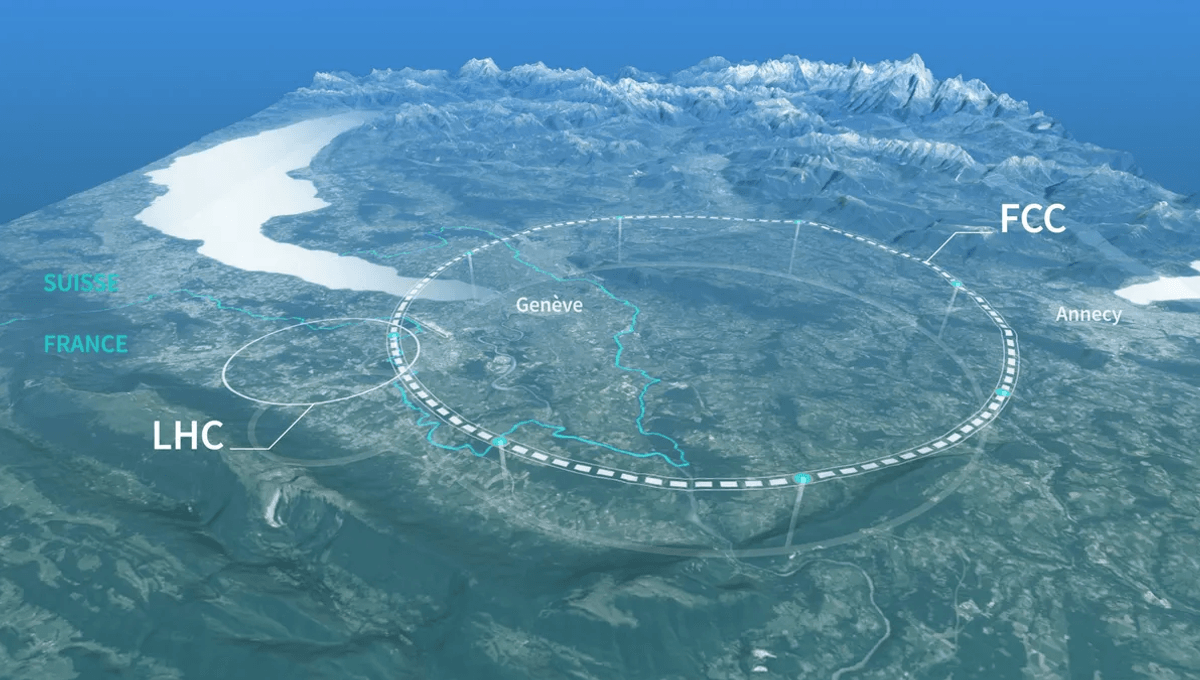
The Large Hadron Collider (LHC) does what it says on the tin. It accelerates protons and ions to a speed never achieved before by humans, allowing them to probe new energy realms in particle physics. It will undergo upgrades to increase the number of collisions, but ultimately, it won’t reach any higher energies. To do that, you’d need a bigger particle accelerator, and CERN – where the LHC is located – is considering just that.
The Future Circular Collider (FCC) is to be over three times the length of the LHC, which is 27 kilometers in circumference (16.77 miles). The feasibility study that has just been published has considered over 100 scenarios on how to build this device. They found that it should be a ring with a circumference of 90.7 kilometers (56.45 miles). It will be placed at an average depth of 200 meters (656 feet – twice as deep as the LHC), and it will have eight surface sites and four experiments.
The ring’s placement and layout have been studied to maximize the collider’s scientific benefits and minimize the impact on the territory and people living there. CERN and the LHC span Switzerland and France, and representatives of the two countries at different territorial levels were involved in the feasibility study.
The two host states are now preparing engagement processes to discuss the proposal with the public. The FCC has been designed so as to minimize the costs of construction and impact on the region as well as being as sustainable as possible, from its inception to its dismantling. The plan is to make an exemplary sustainable research infrastructure, one that could directly benefit the people around the facility. The heat exhaust from the next upgrade of the LHC will actually be used to heat water in the local villages.
The cost of this project is 15 billion Swiss francs (about $17.5 billion) and, just like the LHC, the majority of it will come directly from the CERN annual budget. The cost will cover all the phases of construction and will be spread over a period of 12 years.
According to the plan, construction will begin in the 2030s to deliver the first phase of the project, which will allow for collisions between electrons and their antimatter counterparts, positrons. The FCC that could be upgraded to be a proton-proton collider, like the LHC, in the 2070s. The collider would then be expected to work until the year 2100. CERN will have a dedicated council meeting about the FCC in November, but a final decision is not expected until 2028.
The full feasibility study has been released in three volumes: volume 1, volume 2, and volume 3.
Source Link: What Might The Next Big Particle Accelerator Look Like? We've Seen The First Glimpse